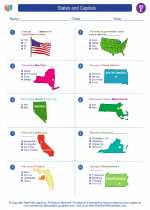Clothing
Clothing is an essential part of human life and has been a reflection of culture, social status, and individual preferences throughout history.
Types of Clothing
- Traditional Clothing: Each culture has its own traditional clothing, often influenced by climate, customs, and historical factors.
- Casual Clothing: This type of clothing is comfortable and suitable for everyday wear, such as t-shirts, jeans, and sneakers.
- Formal Clothing: Typically worn for special occasions, formal clothing includes suits, dresses, and formal shoes.
- Sportswear: Designed for sports and physical activities, sportswear includes items like jerseys, shorts, and athletic shoes.
- Uniforms: Worn by people in specific professions or organizations, uniforms serve to identify and create a sense of unity.
Materials and Production
Clothing can be made from various materials, including cotton, wool, silk, polyester, and more. The production process involves designing, cutting, sewing, and finishing the garments.
Impact of Clothing
Clothing choices can influence how individuals are perceived by others and can also reflect personal identity and expression. Additionally, the fashion industry has significant economic and environmental impacts.
Study Guide Questions
- What are the different types of clothing?
- How does clothing production contribute to the economy?
- Discuss the significance of traditional clothing in different cultures.
- Explain the role of clothing in expressing individual identity.
◂Social Studies Worksheets and Study Guides Fifth Grade. States and Capitals
Study Guide States and Capitals
States and Capitals  Worksheet/Answer key
Worksheet/Answer key States and Capitals
States and Capitals  Worksheet/Answer key
Worksheet/Answer key States and Capitals
States and Capitals  Worksheet/Answer key
Worksheet/Answer key States and Capitals
States and Capitals 

 Worksheet/Answer key
Worksheet/Answer key
 Worksheet/Answer key
Worksheet/Answer key
 Worksheet/Answer key
Worksheet/Answer key

The resources above cover the following skills:
Geography: A student should be able to utilize, analyze, and explain information about the human and physical features of places and regions. A student who meets the content standard should:
Understand that a region is a distinct area defined by one or more cultural or physical features.